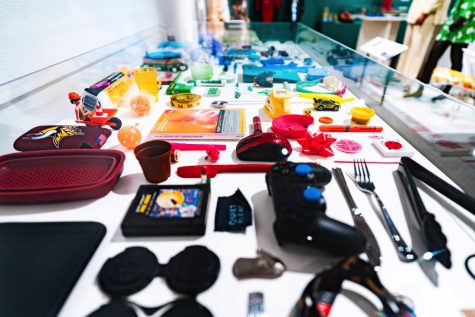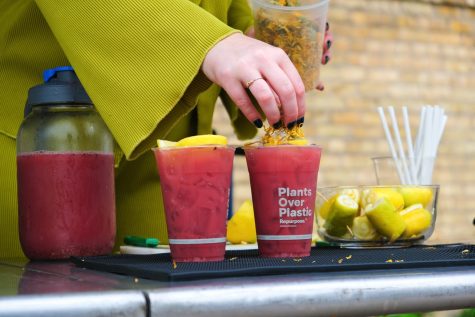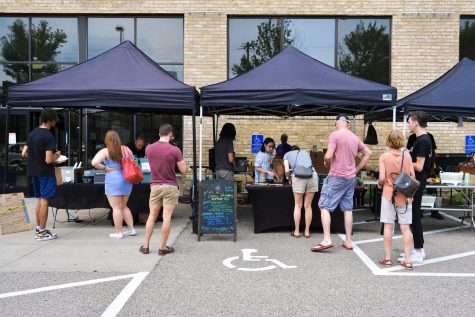Despite the fact that the parking scenario seemed to work out exclusively for those opting for the valet option, an enthusiastic trickle of people steadily streamed past the Surly Brewing Festival Field gates on Sept. 14 to either claim their spot before the stage or queue up for a beer ticket (or two).
First up, Australian-born indie-folk artist Indigo Sparke took the stage as the evening’s opener. From the slight swing of her floral blue midi skirt to the dark shades she donned for the first half of her performance, the Adrianne Lenker-cosigned artist had a sort of effortless cool-girl vibe on lockdown — and an ethereal voice to match.
“You guys are a good kind of people,” Sparke declared. Having spent a year in Minneapolis, she fondly described the evening as being like her American hometown show.
Even for those in the crowd who may have been unfamiliar with her discography — of which there were many based on the lack of audience members singing along and opting instead for the oh-so-midwestern, overtly polite nod-along — it appeared hard not to at least slightly enjoy the soothing tones of songs from her 2021 album, “Echo.”
The National’s Aaron Dessner joined Sparke on stage to play a song from her upcoming album, “Hysteria,” which he produced. By the end of Sparke’s eight-song set, the field had filled out significantly. The crowd swayed older, as I anticipated. However, a later wander through the masses gave way to the occasional tote-bag-wielding twenty-something in a corset top and sunglasses (despite the lack of sun). The 46-year-old Dessner, who somewhat-surprisingly collaborated with Taylor Swift on two albums in 2020, showed a recent willingness to service younger pop listeners on occasion.
The National kicked things off with “Don’t Swallow the Cap,” arriving on stage to a set of enthusiastic cheers from the audience.
They cruised through their nineteen-song set smoothly, minimally interjecting for a bit of banter. On one such occasion, lead singer Matt Berninger lept just a bit too far ahead of schedule and attempted to introduce “Slow Show” as “Ice Machines” — a mistake Dessner was all too quick to catch, initiating a running joke among the band and audience for the rest of the evening.
These guys have an ease about themselves when it comes to audience interaction, seemingly comfortable to just do their thing without any concern for how it might be going. The crowd swayed to the slow angst of love songs like “Pink Rabbits” and “England.” Dessner and his twin brother, Bryce, joined in on a few guitar solos throughout the night while brothers Scott and Bryan Devendorf held down the bass and drums, respectively.
Berninger, dependable baritone and all, made his way into the crowd on multiple occasions, drifting among the masses while someone on stage held the never-ending length of cord for the mic in his hand. After making a not-so-grand exit from the stage, the band walked right back out for an encore featuring their recent Bon Iver collab, “Weird Goodbyes.”
Those spending a night at The National’s concert probably know what they like — and they’ve established a trust of sorts that the band will deliver at least something pleasing from one of their eight albums. There’s no denying the group can play a solid show. Although after over twenty years of playing together, it appears The National’s go-to rhythm now opts for the routine, not the exciting.



